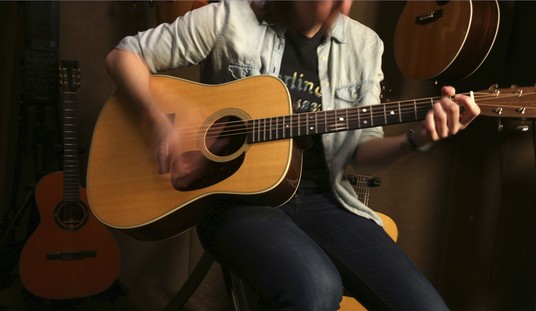Preservationist Environmental Policies Fueled Maui Wildfire Mismanagement
As catastrophic wildfires ravaged Maui, preservationist environmentalists didn’t miss an opportunity to politicize the tragedy.
As of this writing, over 100 Hawaiians have tragically lost their lives and many, sadly, are still unaccounted for. Yet, those ceaselessly beating the climate crisis drum have encircled our fellow Americans like vultures to exploit their plight instead of consoling them.
Notable mouthpieces, namely Democratic lawmakers, have used the situation to pressure President Joe Biden to declare a climate emergency once and for all finally.
A climate zealot, Senator Ed Markey (D-MA) told POLITICO, “The devastation in Maui is a clear sign that the president must declare a climate emergency — now. While FEMA is providing resources to the local heroes on the ground fighting for the lives and livelihoods of Hawaiians, the underlying climate-driven conditions of drought, extreme heat, environmental injustice, and non-resilient infrastructure will remain.”
But the publication warned against the declaration, writing, “Declaring a climate emergency could come with political risks for an incumbent president heading into an election year, potentially spurring a spike in already high gas prices. Any executive action Biden takes would likely face legal challenges, including going up against a conservative Supreme Court that has already ruled that the Environmental Protection Agency does not have the broad authority to rein in carbon pollution.”
Recommended
Is climate a factor that precipitated the deadly Lahaina wildfires? Let’s sift fact from fiction.
First, let’s ask ourselves this: Does climate affect wildfire intensity? Does it actually play a role, or is its role limited or non-existent? The truth lies with the latter.
A 2018 Institute of Physics (IOP) Science study of key drivers fueling high-severity fires concluded that live fuel contributes the most (53%) — followed by weather (23%) and then climate (14%). A recent University of Montana study also poured cold water on climate change, the primary cause behind wildfires. It is humans–not climate–that ignite the majority of wildfires out West. The study said, “Human ignitions started 76% of the wildfires that destroyed structures, and those fires tended to be in flammable areas where homes, commercial structures and outbuildings are increasingly common.”
Second, the underlying causes behind the Maui wildfires are easily identifiable but overlooked by the region's preservationists.
Downed power lines caused early fires. “Fire weather” was then invited by high winds and topography–two conditions that, sadly, make Hawaii vulnerable to high-intensity fires.
“Hawaii is a fire-prone state mostly due to its topography and high winds. Its risk of fire has increased due to the presence of non-native grasses that have overtaken former agricultural sites,” writes Mandy Gunasekara, director of the Independent Women’s Forum’s Center for Energy and Conservation. “One scientist explained that Maui used to be covered with sugar cane plantations, but these operations ceased with the last one closing in 2016. As a result, unattended sugar cane fields have been overtaken by dry, easily flammable grass—first introduced to the island by settlers in the 1900s.”
Local leaders downplayed reports highlighting Lahaina’s susceptibility to having an “extremely high risk of burning.”
Third, Hawaii’s emphasis on achieving unrealistic 100% renewable (or net-zero) environmental goals clouded prevention measures and equally fueled mismanagement.
Hawaii Electric embraced this misguided policy and it shows. The Wall Street Journal revealed the utility admitted it must prevent power lines from sparking. Still, four years later, it invested “less than $245,000 on wildfire-specific projects on the island, regulatory filings show. It didn’t seek state approval to raise rates to pay for broad wildfire-safety improvements until 2022, and has yet to receive it.”
WSJ also interviewed Doug McLeod, formerly a Maui county energy commissioner, who conceded, “‘We weren’t as focused on these fire risks as we should have been.’”
Additionally, local officials were motivated by preservation - not conservation - after it was revealed releasing water to combat fires strays from the commitment to promoting “water equity.” Unbelievable.
"My motto is always like, 'Let water connect us and not divide us,'" Kaleo Manuel, formerly first deputy of Hawaii’s Commission on Water Resource Management, said in a November 2022 University of Hawaii livestream. "We can share it, but it requires true conversations about equity."
"We've become used to looking at water as something which we use and not necessarily something that we revere,” he added.
As fires engulfed the region, Manuel reportedly delayed West Maui Land Company’s request for water by five hours. Instead of facing scrutiny for his misdeeds, he was transferred to another position in the agency.
More troubling is the revelation that officials closed down the only road in and out of Lahaina – putting their residents at further risk.
The Maui case study exemplifies the danger of embracing radical environmental policies that falsely elevate nature over people instead of balancing the interests of both.
Preservationist environmentalism, manifested as climate alarmism, is clearly putting people in harm’s way. The people of Maui – and Hawaii – deserve leaders who value their well-being and that of their island – not grand delusions that cost human lives in the name of “equity.”




No comments:
Post a Comment